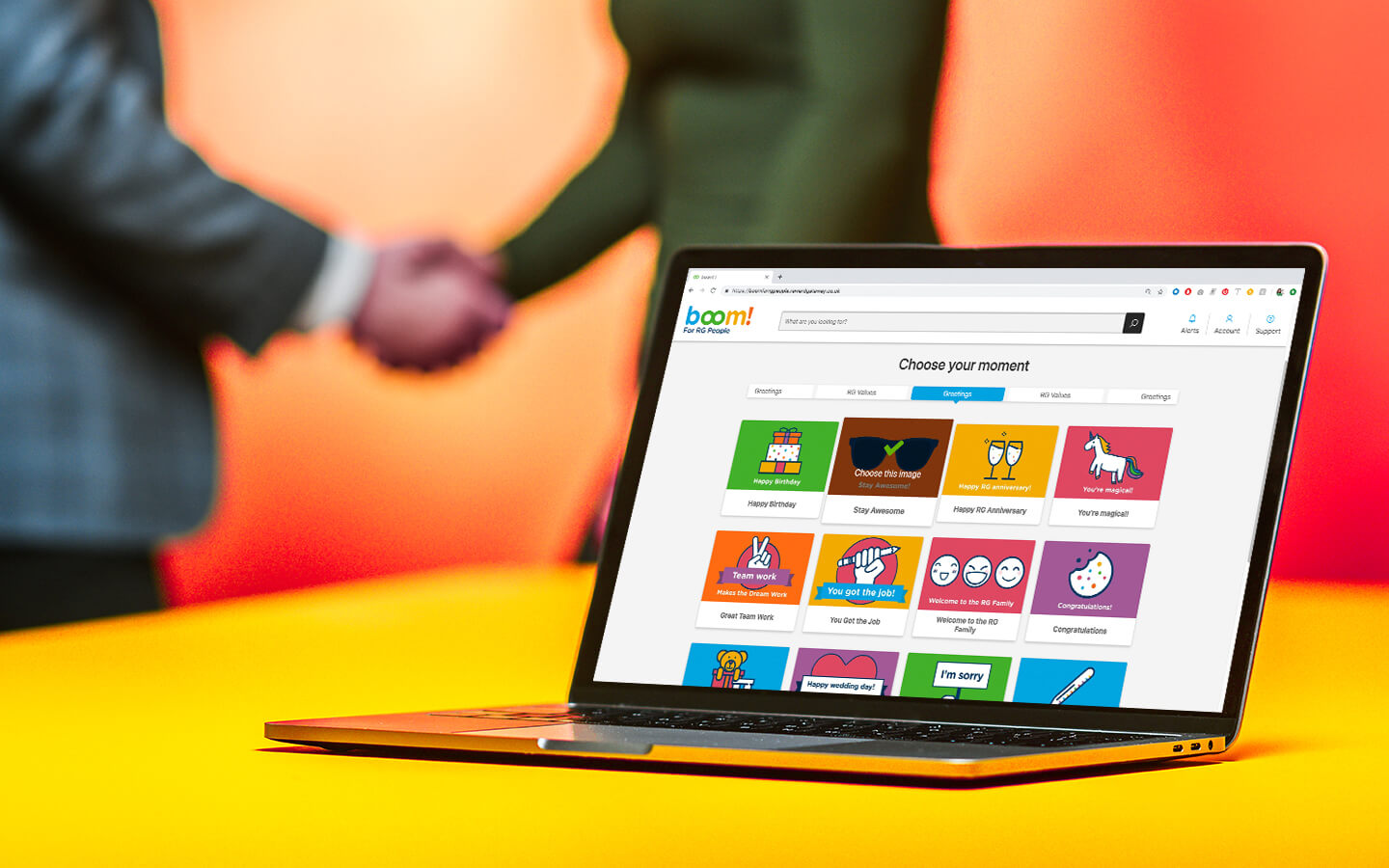According to a recent study, feeling undervalued or unrecognized are two of the top reasons why your employees feel unmotivated at work. The employees who responded admit this has a ripple effect on emotional, mental and even physical wellbeing, which ultimately impacts performance. On the other hand, being recognized by our leaders and peers – having our colleagues see, acknowledge and value our input – delivers employees exactly what they crave to be motivated at work, boosting both their wellbeing and productivity.
Effective employee recognition isn’t just a matter of saying 'hello' or even 'thank you' – effective recognition is strategic. It shows employees appreciation for a success that helped improve the employee or customer experience that can be tied to your company’s values, purpose or objectives.
Done well, strategic employee recognition lets the individuals in our organization know that they bring something valid and unique to our business, and drive behaviors that enable success and encourage collaboration as our organizations grow and change. It can also help create an inclusive, encouraging culture which can strengthen your employer brand, and improve both retention and recruitment.
Strategic recognition is so powerful that in Josh Bersin’s latest report, he states companies that excel at employee recognition are 12 times more likely to generate strong business results than their peers.
Read on to discover seven ways you can tap into the power of strategic recognition to drive business growth:
1. Prioritize and deliver your strategic objectives
If your company has set its strategic goals, one way to ensure your people are on the right track to achieving them is to recognize and reward the steps they take to get there.
Instead of giving people that insight once a year or once a quarter, why not give them that opportunity every day? It might sound really straight forward, but this approach achieves two things:
- It helps you build a purpose-driven company by putting your strategic objectives front and center and linking an individual’s efforts to meaningful work.
- And, it makes your strategy visible and accessible, and provides a clear litmus test about what projects to prioritize.
By encouraging peer-to-peer – not just manager-led – recognition, you’re making reaching your strategic objectives everybody’s responsibility.
Designing eCards or creating company awards that are linked to your strategic objectives that can be given by anyone at any time means your people are recognized and rewarded each time they make progress.
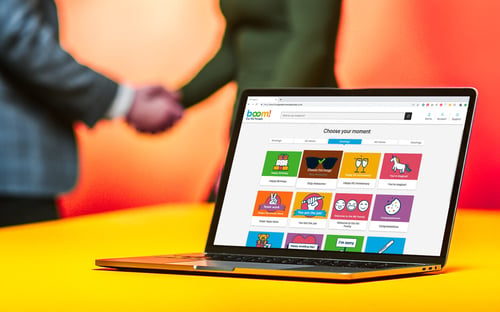
Bersin states in his report:
Employees who feel appreciated are more aligned with business goals and more likely to take actions and produce innovations that lead to profits.
This helps us understand why peer-to-peer recognition is 35.7% more likely to have a positive impact on financial results rather than manager-only recognition.
2. Promote and reinforce culture transformation
Recent research from Gartner concluded that organizations that simplify decision-making by codifying their company values improve performance during times of organizational transformation. How?
Strategic recognition provides employees feedback about what good looks like, what matters, and this helps reinforce desired behaviors.
Values are what your employees will instinctively use to guide their decision-making and behavior, especially during times of stress or complex organizational change.
Organizations that create a recognition framework based on company values are also able to see which values being lived and recognized in specific teams, or which values may not be resonating in different areas across the business.
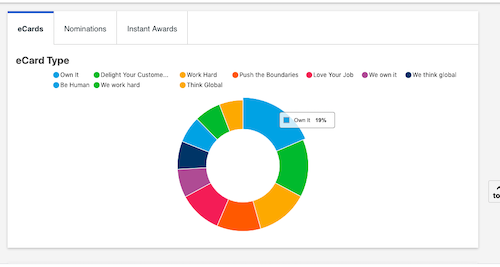
If your organization is going through culture change, a strategic employee recognition program can allow you to report, in real-time the progress you're making through your transformational journey, enabling you adapt people strategy or your communication program to help improve the understanding of different values as your business continues its journey.
3. Strengthen customer service
Frequently recognizing employees for how they handle customer relationships encourages good service, and this practice has led to an increase in customer service ratings and NPS for a number of the organizations we partner with.

As a leading travel insurance and assistance provider, the Cover-More Group takes pride in protecting the travel experience of more than 18 million travelers worldwide, each year.
The People and Culture team were proactive about recognizing and rewarding employees living the Cover-More values and going to great lengths to which their call-center employees supported employees.
This continues to motivate teams and direct their energy and focus on creating a positive experience for the travelers in their care.
As companies continue to recognize moments when their people handle customer queries and strengthen client relationships, they increase engagement and improve customer service.
4. Improve employee safety
Bersin’s research found that using strategic recognition for preventive measures has helped reduce injuries or other dangerous incidents.
PYBAR Mining Services, a company with over 800 employees, revived their recognition and reward experience. In addition to celebrating annual service milestones, they introduced peer-to-peer eCards called “High 5 a Mate.” They can send each other eCards based on their five values – of which Safety is one.
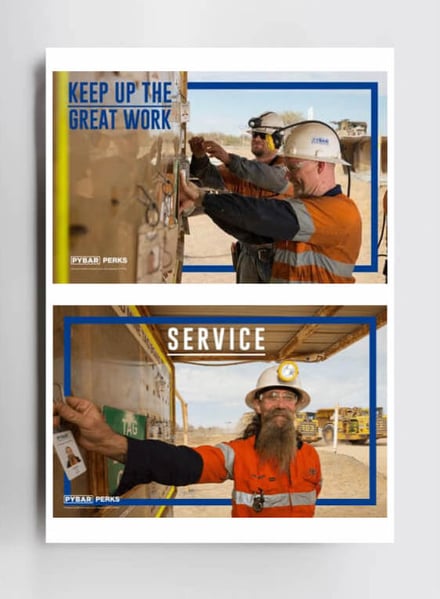
This doesn’t always have to apply to physical safety either – IT teams can recognize members of their development team who improve code to increase security, or ship a feature that keeps user or employee data safe.
5. Increase retention and accelerate hiring
Bersin reports that companies that score in the top 20% for building a "recognition-rich culture" had 31% lower voluntary turnover rates. He also cites a study that found that fulfilled employees are two times more likely to stay five or more years, and three times more likely to stay 10 or more years.
A strategic recognition program is continuous, and allows employees to feel valued and connected to a bigger mission throughout their employee lifecycle, not just specific milestones.
It can strengthen your culture and employee experience, and improve your company’s Employee Value Proposition (EVP).
Peoplecare, a not-for-profit healthcare provider, developed its reward and recognition program “VIP” to reinforce the company values, known as “True Loves,” and to increase awareness of what employees were achieving across the business.
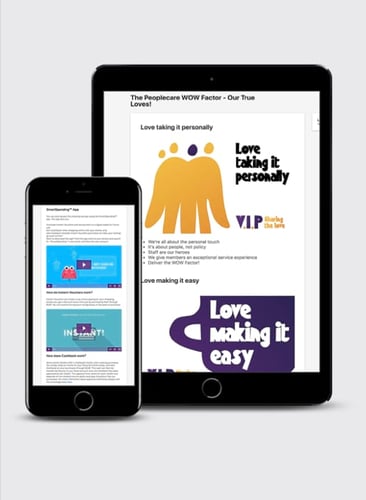
After launching the program, engagement scores increased, and for two years running, Peoplecare has been on AON’s Best Employer list and has successfully continued to attract talent in a regional area with a limited talent pool.
6. Identify and develop leaders
Employees who recognize their peers regularly, and engage with the social recognition newsfeed with comments and likes play an important role in the culture of your organization. They are likely to be influencers and their input and enthusiasm are valuable assets to your business as it grows.
Employees who provide specific, genuine recognition to their team members demonstrate proactiveness. Managers who recognize employees regularly clearly have an understanding of how to keep their people motivated and connected to the values and mission of your business. You can encourage desirable behavior by checking your program leaderboards and shining a spotlight on those culture ambassadors too!
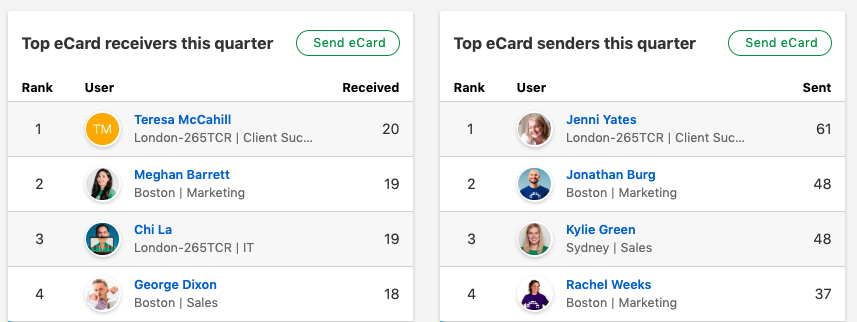
7. Enhance visibility and communication
With business moving faster than ever, there’s always a risk that leaders will miss something or someone significant. Peer-to-peer recognition improves engagement by increasing the visibility of what your direct reports are being recognized for gives managers and even Executive Team Leaders insight into the specifics – the components of a presentation or report they prepared that you mightn’t have been aware of, or moments when they’ve stepped in and rescued a situation that isn’t part of their normal day job.

I love speaking to leaders who check their social recognition feeds regularly – these are nitty gritty moments of success – managers can feed these back to higher or senior management. Those senior leaders can give these achievements even more visibility in their company-wide communications.
8. Promote and encourage cross-team collaboration
One of the big advantages of having a unified, company-wide recognition program is that it allows people from different departments to recognize the work of peers they don’t normally sit or collaborate with on a regular basis.
To encourage and improve employee collaboration, you could combine the power of communications with strategic recognition, and amplify the moments when your team members work with others. This gives teams visibility and connect them to the wider business that may be outside their day-to-day work.
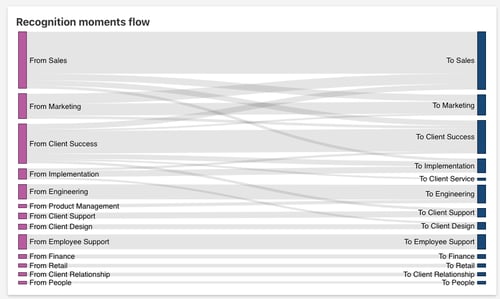
Above is a sample report from a “test” company that wants to see how recognition is flowing across the business. You can see that sales is sending recognition to lots of teams, but look closely, and you’ll see some risks with People and Finance, who are not receiving or sending recognition to other teams.
This is a data point you can take action on, and bring to managers of those teams.
Similarly, you can drill down into specific teams to see where recognition is flowing from one specific area of the business. This program data provides powerful employee engagement analytics and reporting that you can use to plan for future projects or even direct your learning and development opportunities.
Being recognized helps to build stronger team bonds, and when it’s social and driven by your peers and leaders, it amplifies the visibility and impact of an individual’s contribution, and also improves their connections across the business. This is motivating and empowering for your employees!
Rolling out the right reward and recognition program is core to maximize opportunities to improve motivation, engagement and ultimately performance. Are you ready to drive business growth with strategic recognition?

 Joy Adan
Joy Adan
